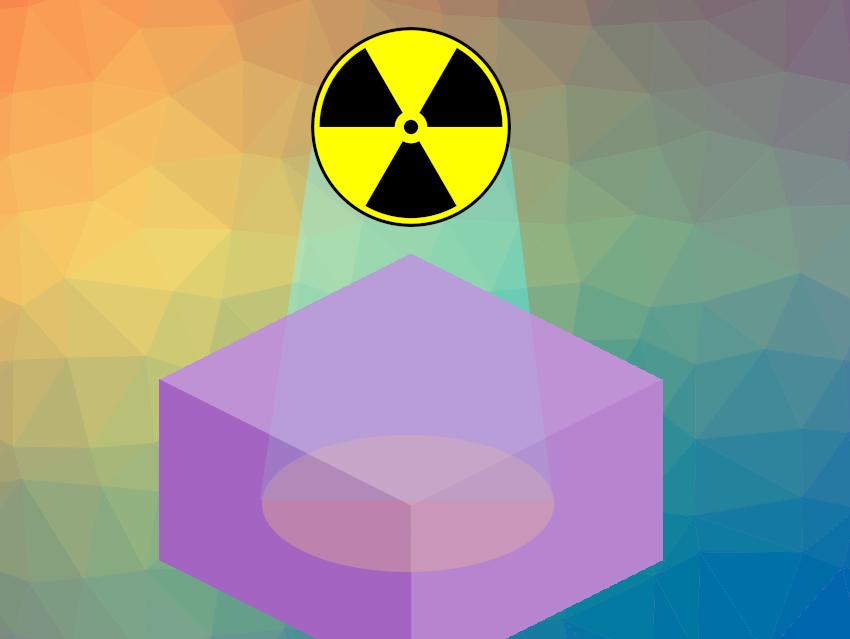Hydrogels are water-based polymers that are vital materials in a number of fields, particularly medicine, where they have applications in drug release, bone repair, tissue regeneration, and much more. They usually need to be polymerized in situ, which poses a number of challenges.
Hailei Zhang, Yanmin Yang, Hebei University, Baoding, China, Gang Han, University of Massachusetts Medical School, Worcester, USA, and colleagues have developed a nanotube-based system that overcomes many of the disadvantages of previous systems. The team’s nanotubes can be injected along with hydrogels and activated by X-rays, giving off an “afterglow” that polymerizes the hydrogel. Because the system harnesses X-rays, it can penetrate much deeper into tissue than has previously been possible.
Drawbacks of Current Hydrogel Polymerization Techniques
To date, a number of different angles have been explored to polymerize hydrogels by inducing crosslinking, all with their own drawbacks. Temperature-induced polymerization has only a small working window in mammals, and some gels would polymerize through body heat before they reached their target. Magnetism-induced polymerization is incompatible with some medical imaging technologies, and chemically-induced polymerization can be difficult to keep to specific locations.
This makes light-induced polymerization of hydrogels, or photopolymerization, the most promising avenue, but it still suffers from a number of disadvantages. The ultraviolet (UV) or near-infrared (NIR) light used to photopolymerize hydrogels can only reach very superficial tissue depths of up to a centimeter, and UV light in particular is far from ideal thanks to its mutagenic effect on DNA.
Producing X-Ray-Activated Phosphors
The first stage in the team’s process involves producing what they refer to as “biocompatible X-ray-activated visible persistent luminescent emitting phosphors” (X-PLNPs for short). These are nanotube-based particles which absorb X-rays and re-emit light to photopolymerize the hydrogel.
The team began with halloysite, a form of kaolinite which is naturally nanotubular in form, is biocompatible, and disperses well in water. The halloysite nanotubes were first functionalized with EDTA (ethylenediaminetetraacetic acid), then subjected to a hydrothermal reaction with yttrium fluoride (YF3) and a terbium (Tb3+) salt, leaving the surfaces of the nanotubes covered with Tb3+-doped YF3, the “functional” part of the system which emits light after exposure to X-rays.
Safety and Effectiveness of X-PLNPs
The team tested their X-PLNPs in vivo in rats and found that the doses of X-rays needed to cause the X-PLNPs’ “afterglow”, and hence, polymerize the hydrogel, were within safe ranges. Not only that, but they found that the X-PLNPs could be “recharged” with X-rays, and propose leveraging this to polymerize hydrogels by cyclical X-ray irradiation, with very short pulses of X-rays giving the “afterglow” needed from the X-PLNPs to polymerize the hydrogel. This would limit exposure to X-rays, making the system safer.
The team also found that the X-PLNPs themselves are safe, with good cell viability after exposure. In a significant improvement on previous polymerization methods, the team also found that the X-PLNPs could be used to successfully polymerize hydrogels even within very thick cow bones.
A Myriad of Potential Uses
Thanks to the increased depth at which polymerization can take place using the team’s approach, the number of potential applications in medicine is vast, and the researchers even suggest that it could replace surgery in some cases, proposing a sort of non-invasive “3D printing” to repair defective tissue or bone. Other potential medical applications include embolotherapy for treating tumors, the curing of dental resins for less invasive procedures, and repairing defective cartilage.
Even with such a wide range of potential medical uses, the team emphasizes that their system is not only applicable in clinical settings, but could also be used in other industries such as construction, for example, to repair deep-set faults in a variety of materials that would otherwise require demolition.
- X-ray-activated polymerization expanding the frontiers of deep-tissue hydrogel formation,
Hailei Zhang, Boyan Tang, Bo Zhang, Kai Huang, Shanshan Li, Yuangong Zhang, Haisong Zhang, Libin Bai, Yonggang Wu, Yongqiang Cheng, Yanmin Yang, Gang Han,
Nat. Commun. 2024.
https://doi.org/10.1038/s41467-024-47559-z




